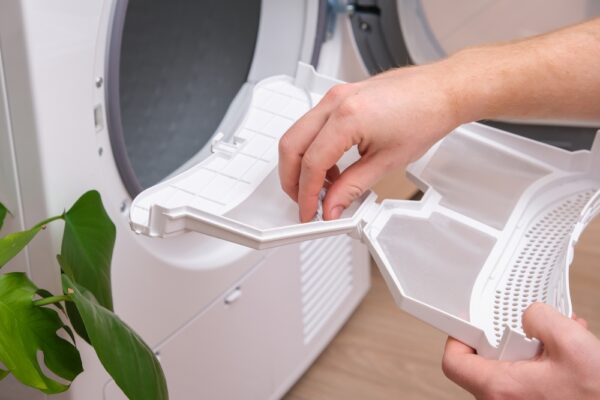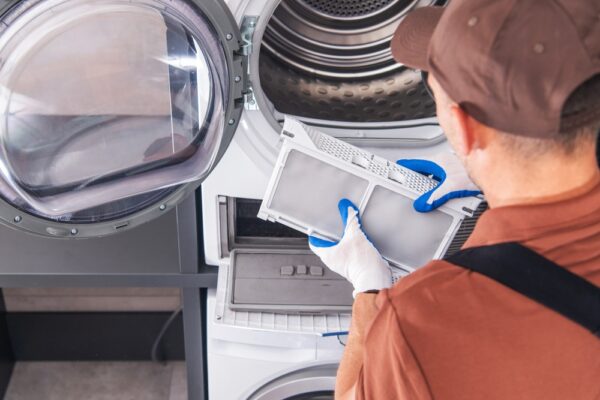Who Should I Call To Fix A Dryer?
Introduction
Ah, the trusty dryer. It’s one of those appliances that we often take for granted until it decides to play hard to get. When your laundry starts piling up and your dryer refuses to cooperate, it can feel like you’re in a never-ending battle. But don’t worry! In this comprehensive guide, we’ll navigate the world of dryer repairs—from simple troubleshooting tips you can try at home to when it's time to call in the professionals. So grab a cup of coffee, sit back, and let’s dive into the ins and outs of dryer repair!
Understanding Your Dryer
1. How Does a Dryer Work?
Before we get into repairs, it’s essential to understand how your dryer operates. Most residential dryers use either electricity or gas to power the heating element. Here’s a simplified look at their functions:
- Heating Element: This warms up the air that circulates through the drum.
- Drum: This is where you place your clothes; it rotates to tumble them.
- Blower: This pushes hot air through the drum and vents out moisture.
Knowing these components helps you grasp what might be going wrong during a malfunction.
2. Common Types of Dryers
Dryers come in various types, each with its unique features:
- Vented Dryers: These expel moist air outside.
- Condenser Dryers: These extract moisture from air without venting outside.
- Heat Pump Dryers: These are energy-efficient by reusing hot air.
Understanding which type you have can guide you in troubleshooting effectively.
Identifying Common Dryer Issues
3. Why Isn’t My Dryer Heating?
One of the most common issues is when your dryer runs but doesn’t heat up. The first thing to check is whether it’s receiving power—this can be as simple as checking if it's plugged in or ensuring that circuit breakers are not tripped.
Possible Causes:
- Faulty heating element
- Bad thermal fuse
- Defective thermostat
It’s always advisable to consult your user manual before performing any checks or repairs.
4. What If My Dryer Won’t Start?
If your dryer doesn’t start at all, it could be more than just a minor hiccup.
Troubleshooting Steps:
If none of these work, consider calling for professional help.
From Troubleshooting to Professional Help: Navigating the World of Dryer Repairs
5. Simple Troubleshooting Tips Before Calling a Technician
Before picking up that phone, here are some easy fixes worth trying:
Basic Checks:
- Ensure proper ventilation; lint buildup can cause overheating.
- Clean out the lint filter after every load.
- Make sure nothing is blocking the vents.
Taking these small steps may save you time and money on unnecessary service calls.
6. When Should You Call a Professional?
While DIY fixes are great for minor issues, there are times when you'll need an expert's touch:
Signs It’s Time for Professional Help:
- Strange noises (grinding or squealing)
- Burning smells
- Frequent breaker trips
When in doubt, remember that safety should always come first!

Cost Considerations in Dryer Repair
7. Average Cost of Dryer Repair Services
So how much will this cost you? On average, professional dryer repair services range from $100 to $400 depending on the issue and parts needed.
| Service Type | Average Cost | |--------------------|--------------| | General Diagnosis | $50 - $100 | | Parts Replacement | $100 - $300 | | Labor Costs | $50 - $150 |
Keep these figures in mind when budgeting for repairs.
8. DIY vs Hiring Professionals: What’s Cheaper?
While DIY repairs seem like a money-saver at first glance, they can often lead to costly mistakes if not done correctly. Hiring professionals might cost more upfront but could save you from future expenses down the line.
Maintaining Your Dryer for Longevity
9. Regular Maintenance Tips for Your Dryer
To keep your dryer running smoothly for years to come:
Regular maintenance goes a long way!
10. Signs That Your Dryer Needs Maintenance
Be on the lookout for these signs:
- Clothes taking longer than usual to dry
- Excessive noise during operation
- Heat buildup around the appliance
If you notice any of these symptoms, don’t ignore them!
Specific Repairs You Might Encounter
11. Repairing a Noisy Dryer: What You Need to Know
A noisy dryer could indicate several problems ranging from worn-out belts to faulty bearings.
Step-by-Step Noise Diagnosis:
dryer repair near meAddressing these issues promptly can prevent more significant damage down the line.
12. Fixing Unevenly Dried Clothes
Have you ever pulled clothes out only to find they're still damp? This could be due to poor airflow or an unbalanced load.
Solutions:
Understanding Warranty and Insurance Options
13. Do I Have Warranty Coverage?
It’s essential first to check whether your appliance is still under warranty—it might cover specific repairs or parts replacement!
Key Points:
- Manufacturer warranties usually last 1 year from purchase.
- Extended warranties may offer additional coverage if purchased separately.
Always read terms carefully before assuming coverage exists!
14. Homeowners Insurance vs Appliance Insurance: Which One Covers Repairs?
Many homeowners assume their insurance will cover appliance breakdowns—which isn’t always true! Here’s how they differ:
| Insurance Type | Coverage | |--------------------------|------------------------------------------| | Homeowners Insurance | Typically covers damages from accidents | | Appliance Insurance | Specifically covers breakdowns & repairs |
Make sure you're adequately insured based on your needs!
The Role of Technology in Modern Dryers
15. Smart Dryers: Are They Worth It?
With technological advancements, smart dryers are becoming increasingly popular! But do they really deliver?
Benefits:
However, weigh these benefits against costs before making a decision!

16. Diagnosing Problems with Smart Technology Features
Smart dryers often come equipped with diagnostic tools that alert users about potential problems before they escalate! If you're tech-savvy enough:
1.. Use manufacturer apps for real-time alerts and troubleshooting guides! 2.. Explore online forums for community support on common issues!
This tech can really simplify your life—if used correctly!

FAQs About Dryer Repair
FAQ 1: How often should I clean my dryer vent?
Cleaning your dryer vent should be done at least once a year—or more frequently if you use your dryer often!
FAQ 2: Can I run my dryer without a lint trap?
No way! Running your dryer without a lint trap increases fire hazards significantly—never skip this crucial component!
FAQ 3: Why does my dryer smell like burning?
A burning smell usually indicates lint buildup or faulty electrical components; stop using it immediately and check thoroughly!
FAQ 4: Is it worth repairing an old dryer?
If repair costs exceed half of what you'd pay for new models—and it's over ten years old—it might be time to invest in something newer instead!
FAQ 5: Can I fix my heating element myself?
Yes! If you're comfortable working with electrical components—but make sure safety precautions are taken seriously!
FAQ 6: How long do dryers typically last?
Most dryers last around 10–15 years with proper maintenance—a good reason why investing time into care pays off handsomely down road ahead!
Conclusion
Navigating through From Troubleshooting to Professional Help: Navigating the World of Dryer Repairs doesn't have to be overwhelming! With this guide under your belt, you'll feel empowered whether tackling minor issues yourself or knowing when it's best left up professionals' hands! Remember—keeping up with maintenance goes miles towards extending lifespan while avoiding costly repairs down road ahead too! So take care of that trusty appliance—you'll thank yourself later!
Here’s wishing everyone happy drying adventures ahead!